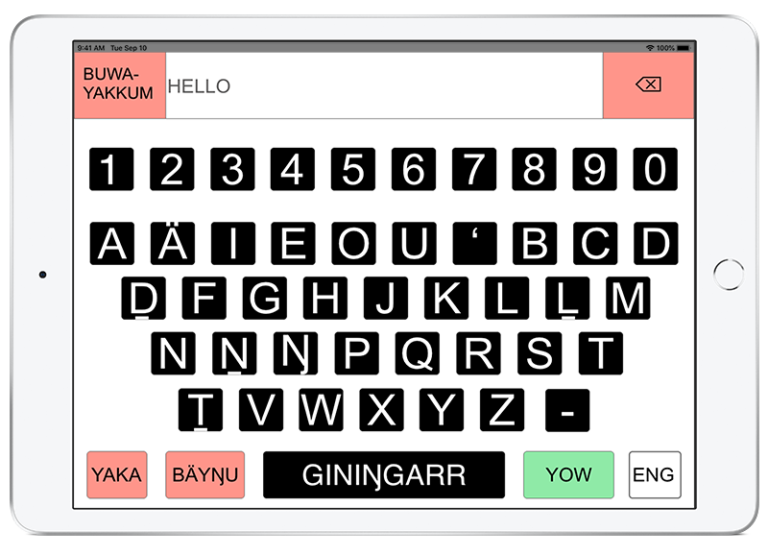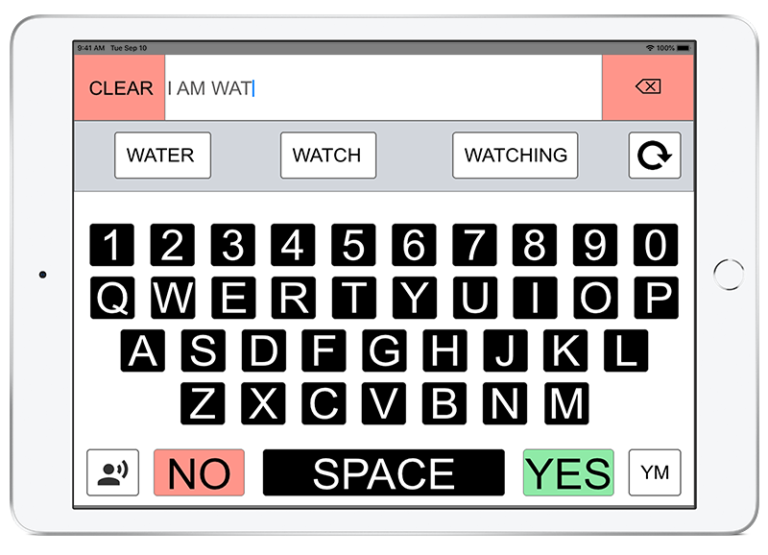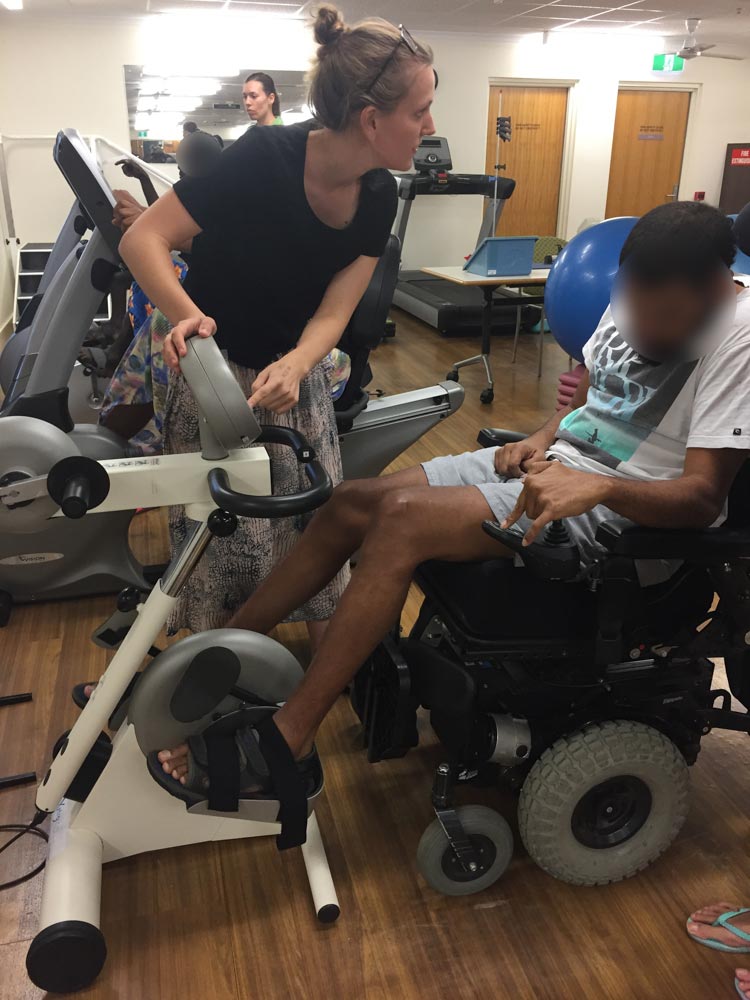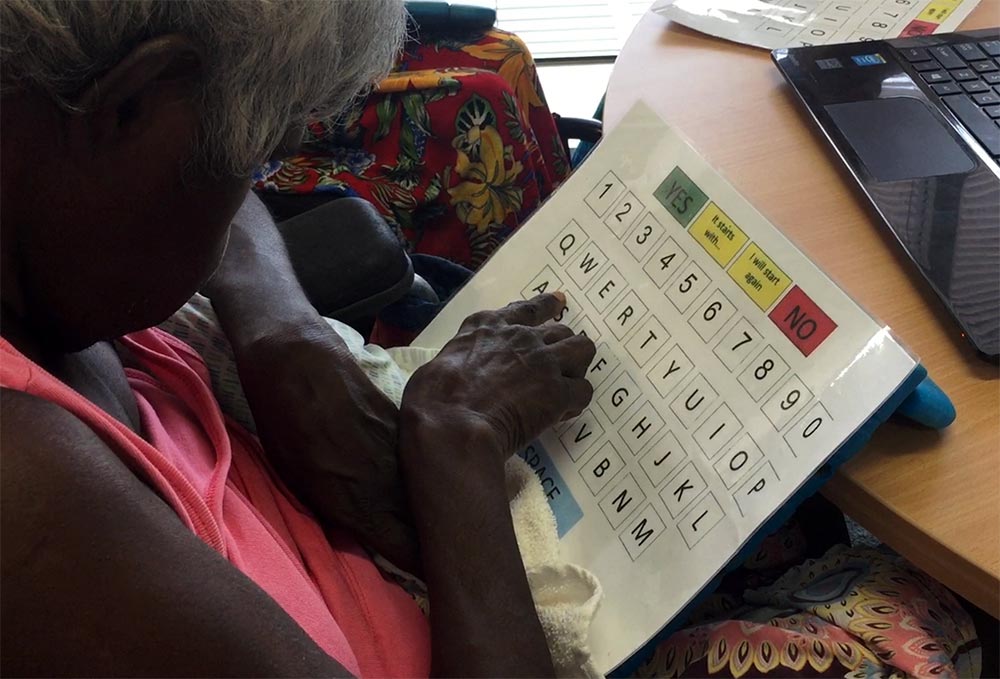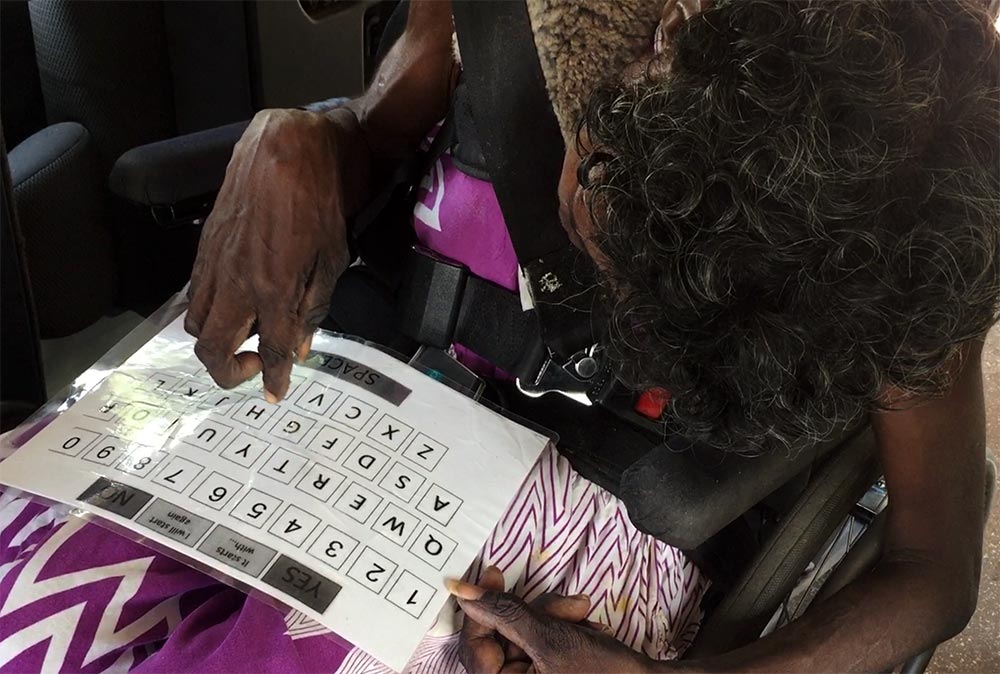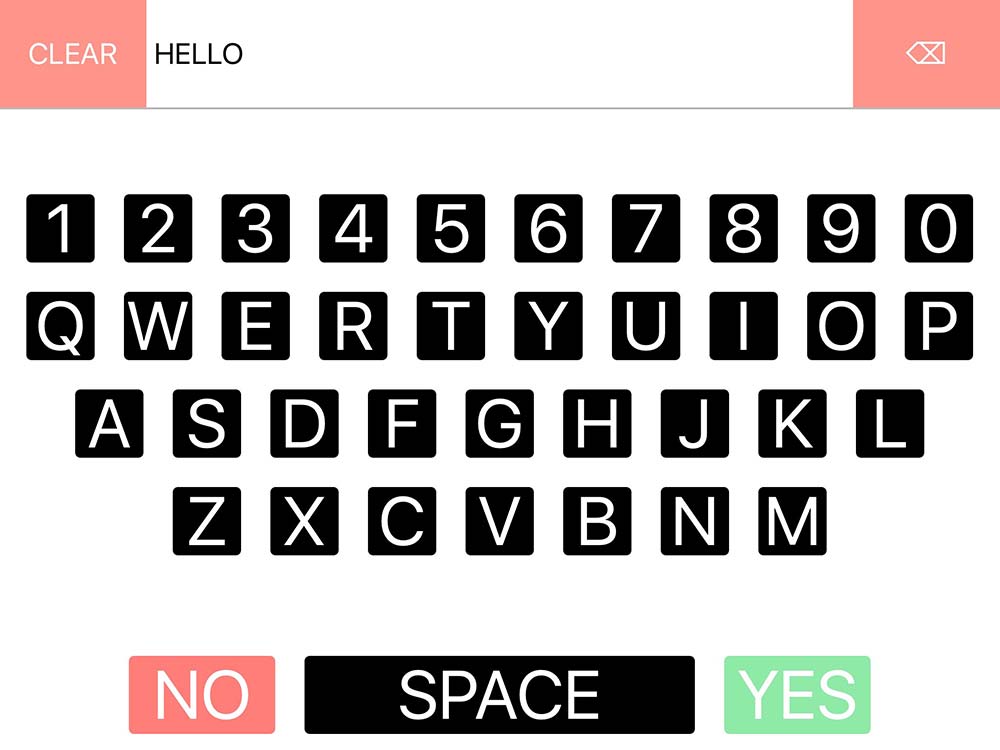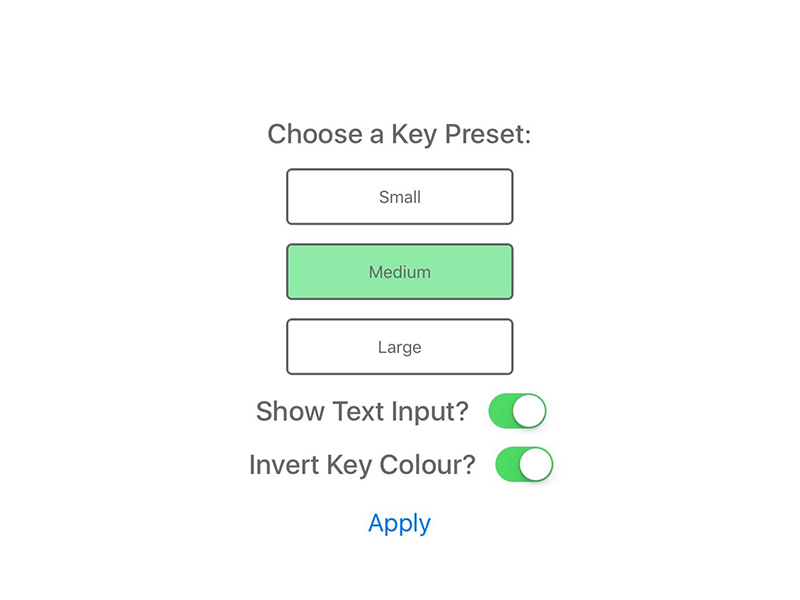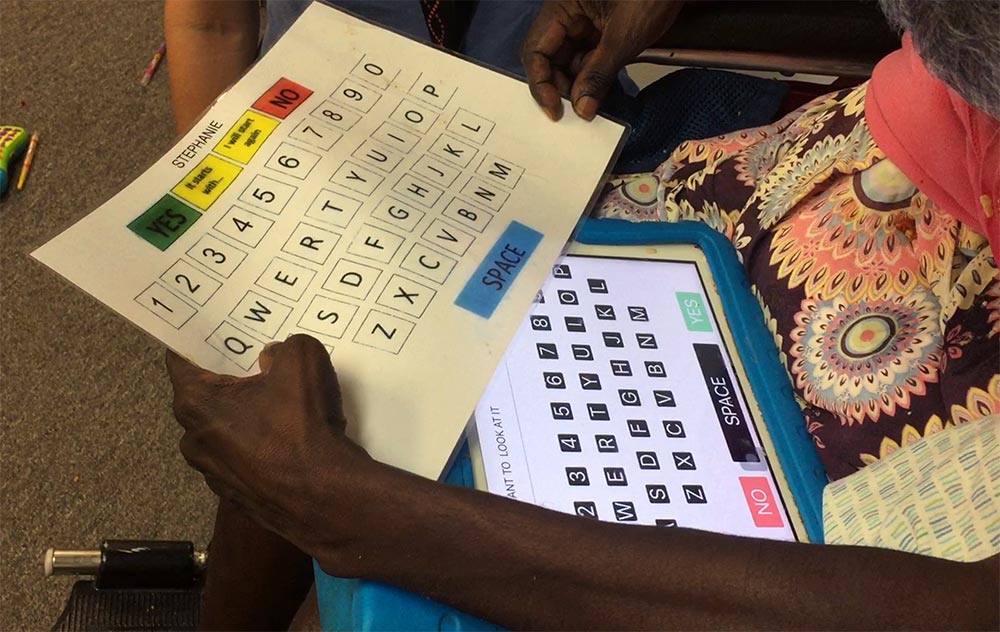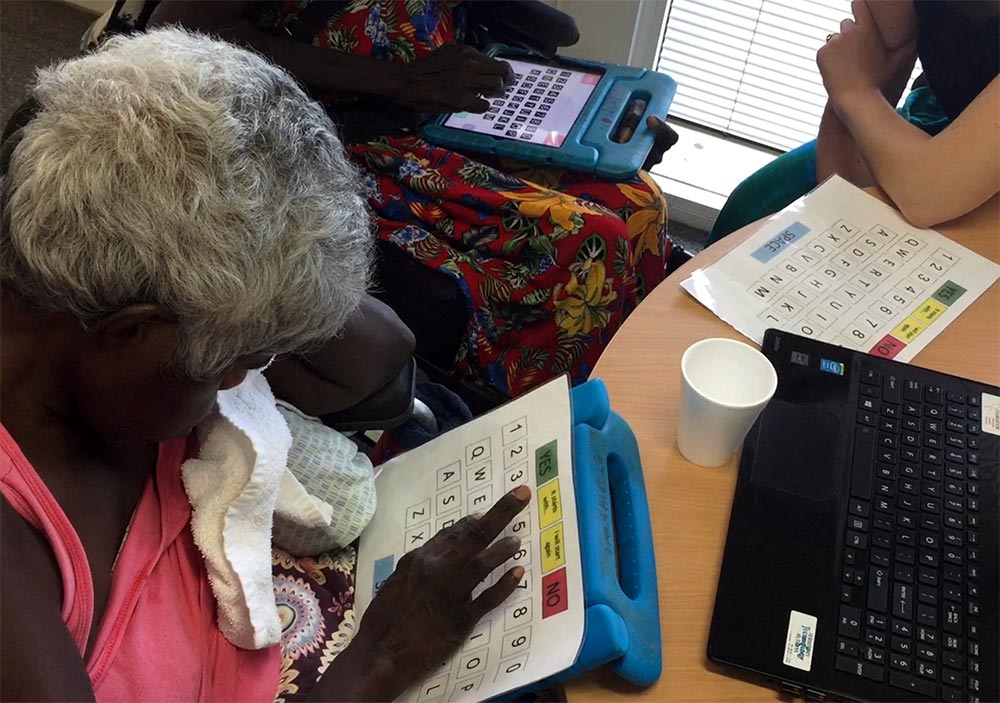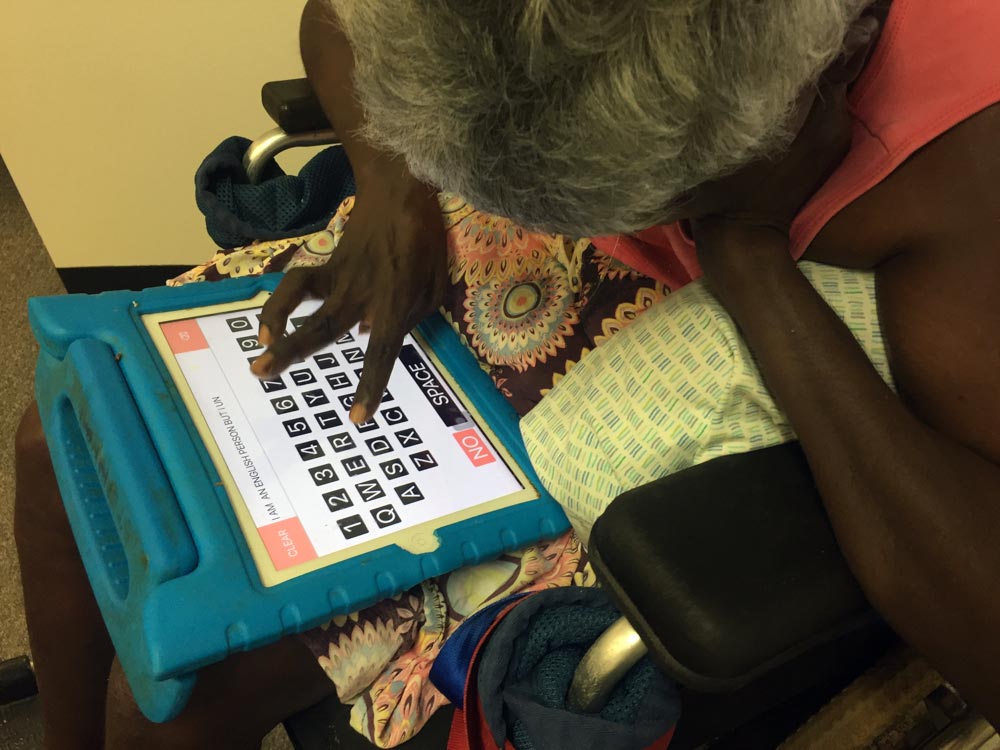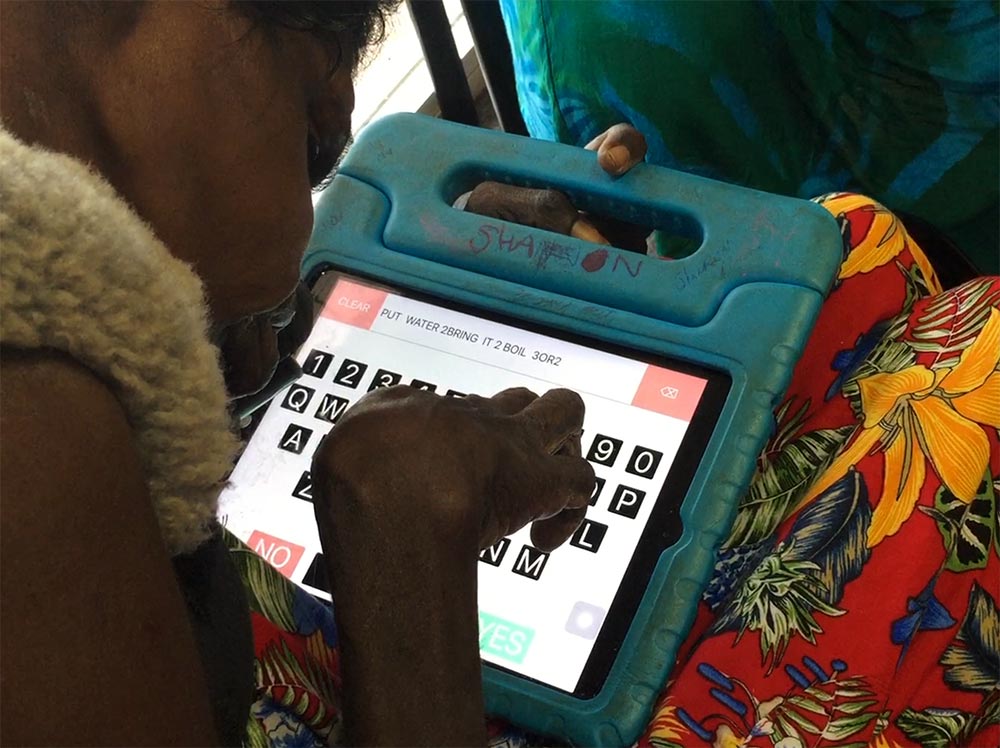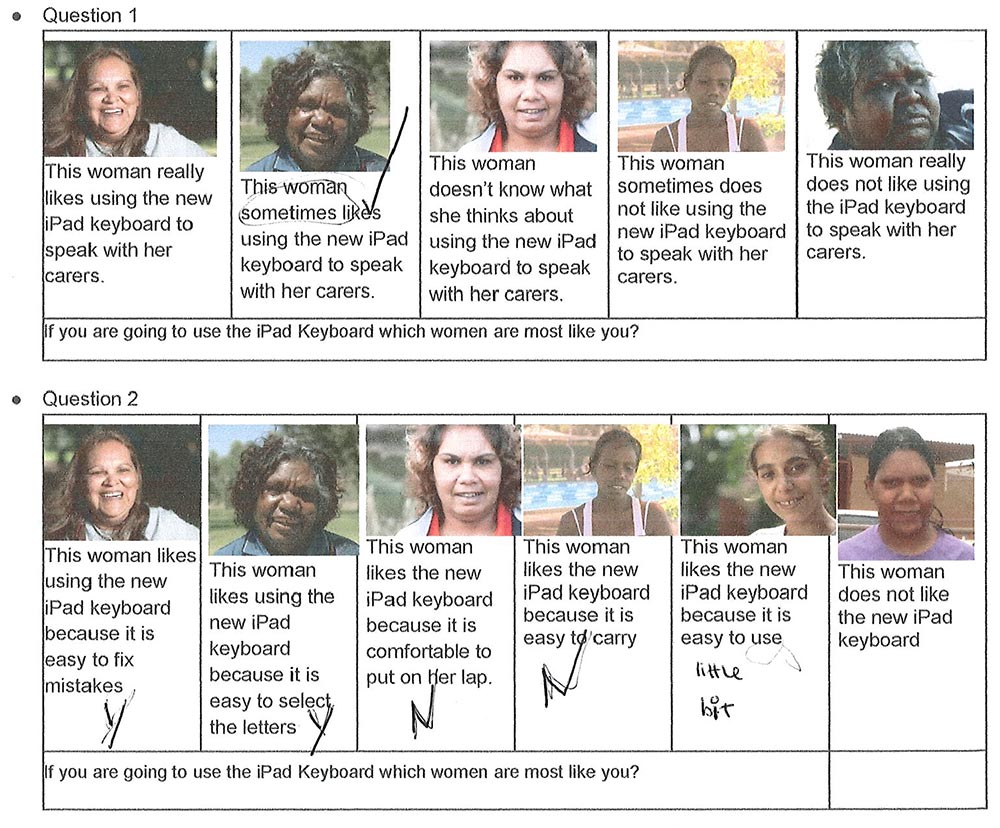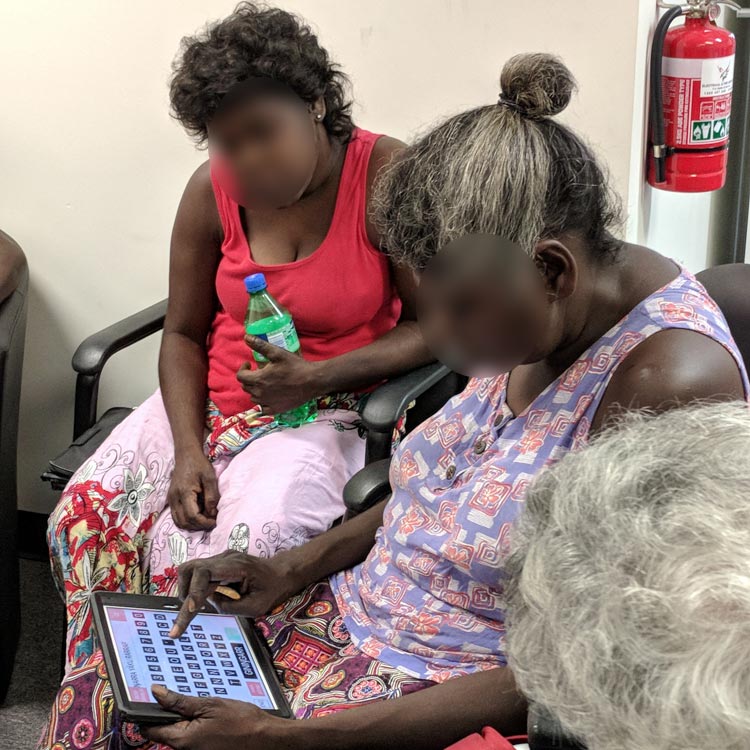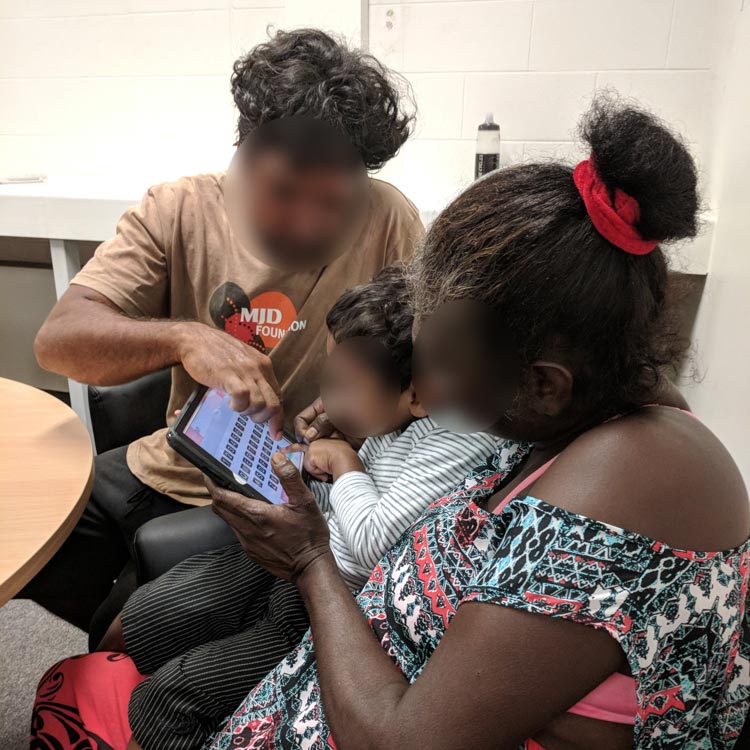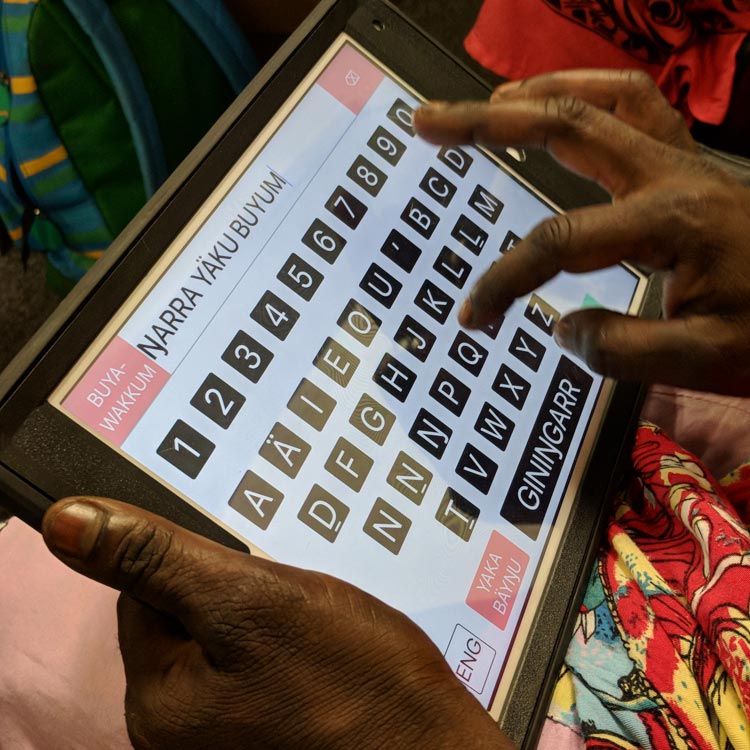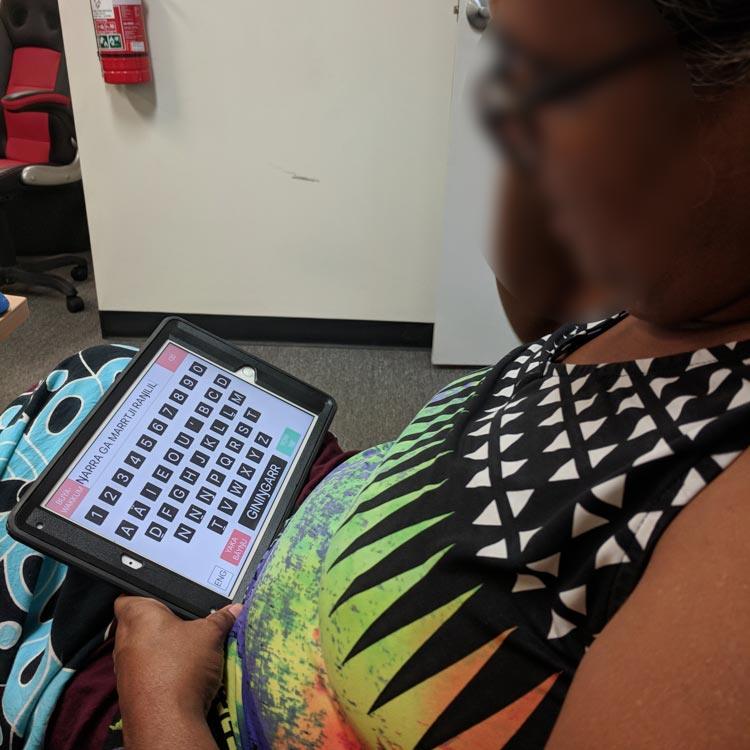MJDF's Aboriginal Australian Assistive Communication Device
Research to find cultural potential for digital AAC devices with Aboriginal Australians
Project Overview
- Client: MJD Foundation
The MJD Foundation wanted to understand if a digital assistive communication device would be valued by their aboriginal clients challenged with Machado-Joseph Disease (MJD). I performed contextual research in Northern Australia to validate the cultural context for digital tools and then designed an indigenous digital keyboard, now on the Apple app store, for use in the community and in academic research.
My Role
- I played the lead role, which included project and stakeholder management, research methods planning and execution, research analysis, prototyping the app, directing remote research conducted by a PhD candidate, and overseeing app development for Apple app store.
Objective
The MJD Foundation (MJDF) is a not-for-profit helping Aboriginal Australians with a debilitating and terminal genetic disease, Machado-Joseph Disease (MJD), that impairs their speech and mobility. In partnership with the Telstra Foundation, the MJD Foundation were investing in developing augmentative and alternative communication (AAC) technology for their indigenous clients and wanted to understand if a digital solution would be of benefit.
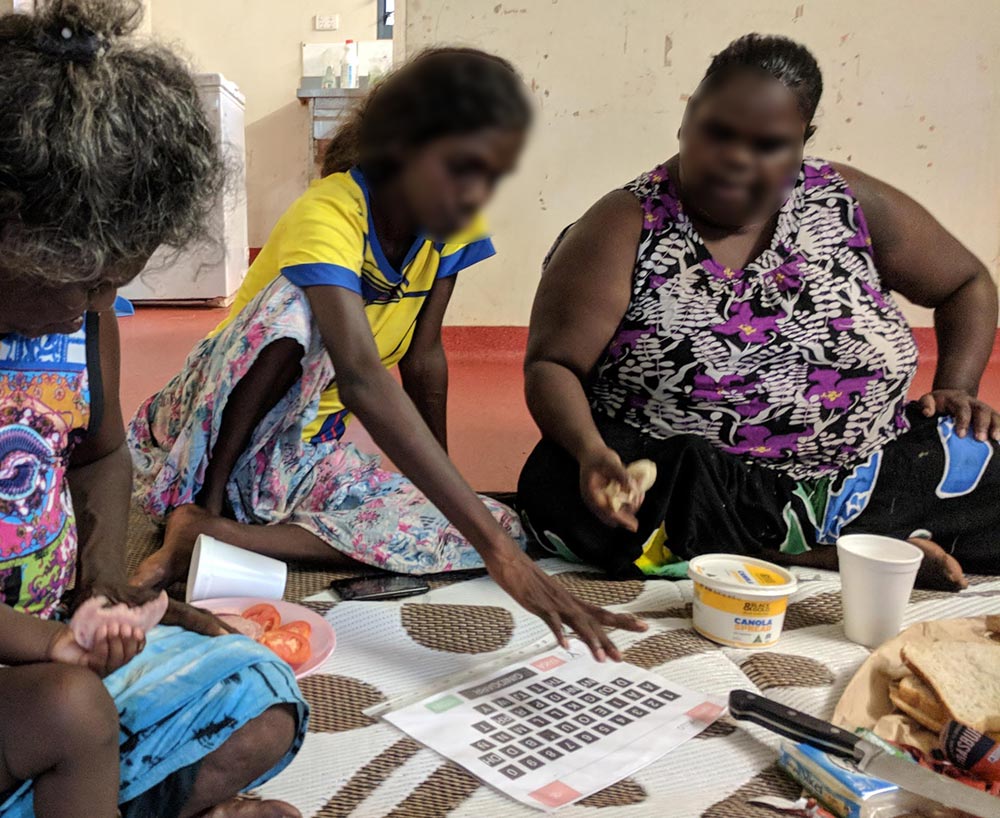
Phase 1 - Discovery
Research
Phase 1 research aimed to establish an understanding of the potential benefit AAC tools could provide to the Arnhem Land indigenous communities affected by MJD in far Northern Australia. Initial research targeted the Aboriginal community in Darwin, where the MJD Foundation centre is located and clients with late-stage MJD are cared for. I developed a culturally sensitive research approach in consultation with Arnhem Land psychologists and academics. The approach blended contextual ethnographic research and a Lean UX methodology. Research activities included:
1. Contextual Interviews and ethnographic research were conducted to better understand the disease and the indigenous use of language with communication tools.
Aboriginal languages are traditionally oral languages, which means that literacy levels are low and there are limited written records of their languages.
I observed how current tools were used and explored how they incorporated technology in their community.
Some of the MJDF clients were difficult to speak with, because they did not use much English and preferred their Yolŋu Matha language. Additionally, they were physically impaired to use an AAC tool.
I created interview scripts using pictures and simple English / Yolŋu matha descriptions that I used to elicit conversation with these clients.
2. A Lean UX approach augmented the contextual research to ensure we maximised our time up in the Northern Territory and returned with actionable next steps.
We developed a specific research assumption to test and validate through quantitative survey metrics and qualitative feedback from MJDF carers and clients.
3. Prototype testing of a rudimentary digital keyboard explored what additional benefit digital tools could offer over the paper-based keyboard MJDF clients had been using to communicate.
The keyboard was developed in Test Flight by an iOS developer who was part of our team. We installed Test Flight on some of the MJDF iPads to use in our test while we were up in Darwin.
Approaches to collecting user feedback had to be adjusted to account for an indigenous cultural dynamic referred to as ‘positive congruence’ – out of respect for another person Aboriginal Australians refrain from providing direct negative feedback to people they do not know well.
In order to address this, I had to construct questionnaires that extracted feedback by structuring questions around a 3rd person narrative. The questions asked the participant to identify with other people whose sentiment was most similar to their own.
Analysis
Qualitative and quantitative research data was processed and analysed. Contextual qualitative data informed cultural considerations for implementing digital tools into the indigenous community, while quantitative data validated that a digital AAC tool could be of benefit to late stage MJDF clients.
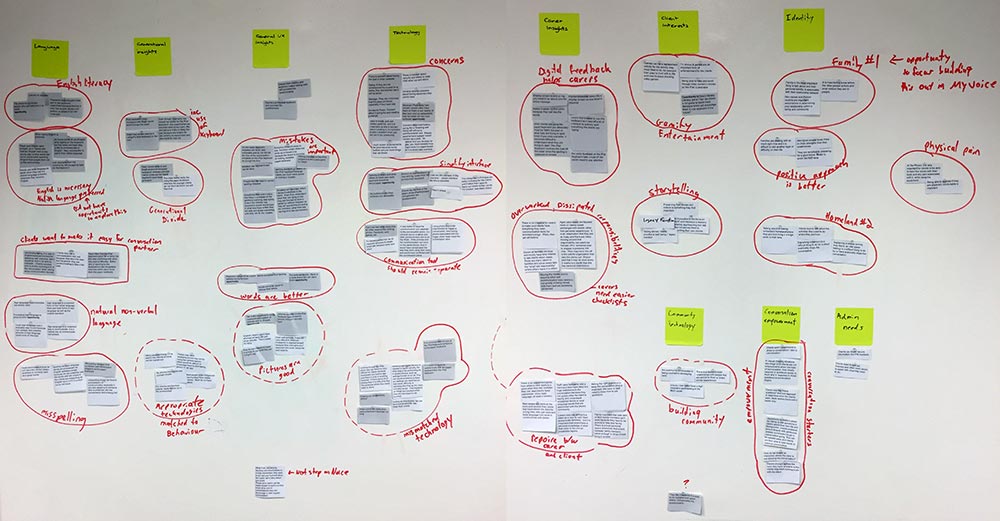
Lean UX Risky Assumptions Validation | Outcome |
|---|---|
Late stage MJDF clients experience a high degree of frustration communicating with everyone. | >70%
PASS |
There are no current communication tools allowing MJDF clients to quickly and easily perform tasks. | >70%
PASS |
Outcomes
Digital tools not only proved to be a potential benefit with the MJDF clients, but also with the wider community interested in practicing their literacy and recording their indigenous language. Research from this discovery phase and contributions from a PhD speech pathologist, who participated in this research, have revealed a desire within the community to teach and learn their native language. The community sees writing as a way to gain fluency in their native language. Therefore, there will be a Phase 2 to further develop the digital keyboard to:
- Incorporate the Yolŋu Matha language into the digital keyboard prototype that was developed in Phase 1, so that MJDF clients and the wider community can write in their native language.
- Introduce an autocorrect feature to the English keyboard, because it was observed that MJDF clients experienced a lot of frustration and embarrassment when they made a spelling mistake.
Furthermore, The MJD Foundation and Telstra Foundation have learned that one tool will not solve the complex needs of their clients and have embraced the iterative Lean UX design process of continual improvement through user testing as they gradually expand their service offering.
I have learned a great deal about conducting culturally sensitive ethnographic research with remote indigenous communities and with people with severe speech and mobility impairments.
Phase 2 - Development
Research & Iteration
Phase 2 carried forward research insights from Phase 1 to further develop the digital keyboard for use with the MJDF clients and the wider indigenous community interested in teaching and learning their native language. Phase 2 research was structured around a UX testing cycle that would be conducted over two rounds of testing.
Round 1 research aimed to test some paper-based concepts in the community before developing an iOS prototype. I developed the research approach and directed the PhD speech pathologist to conduct the program. Our objectives were to:
- Gain better understanding how MJDF clients like to use language;
- Evaluate their sentiment with the existing digital keyboard prototype;
- Gather feedback for the Yolŋu Matha paper-based keyboard prototype that were developed for this round.

We developed two versions of a paper-based keyboard to test whether they preferred to use a mix of English and Yolŋu Matha alphabets, or if they preferred to keep the two alphabets separate:
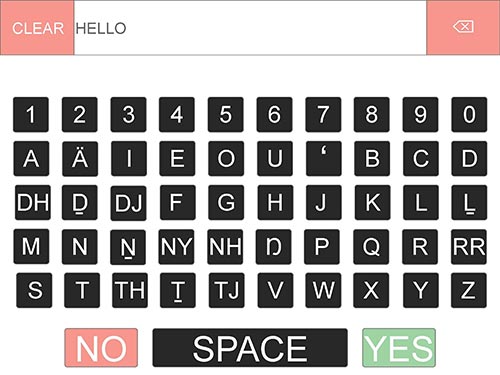
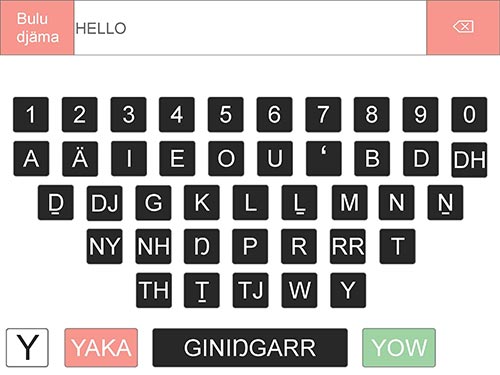
Round 1 development applied the insights gained from research conducted by the PhD speech pathologist to develop a digital keyboard that reflected the preferences of the indigenous community.
I developed the wireframes and provided them to the iOS developer to create an iOS app prototype for testing within the community.
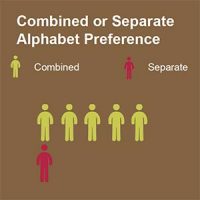
Wireframes illustrating the major features of the new digital prototype:
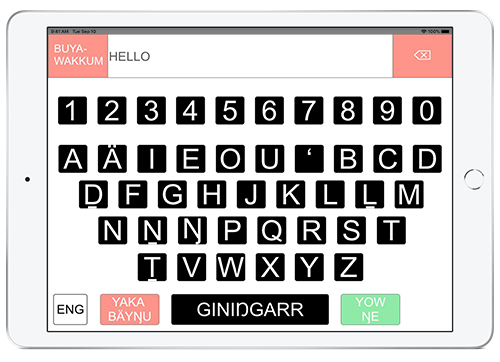
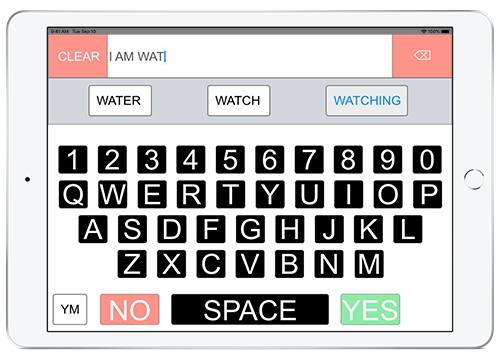
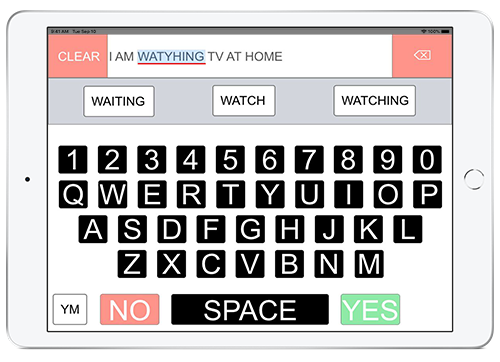
Round 2 research aimed to test the new iOS app prototype in the community to pick up any issues before the app was launched on the Apple app store. Once the app was on the app store, the whole community would have access to the digital keyboard.
Testing of the digital version of the Yolŋu Matha keyboard was conducted by the PhD speech pathologist to gain insights into how the MJDF clients felt about the features of the product. The app was accessible through the TestFlight app on the Apple iPad.
Qualitative and quantitative data was collected from the community and reported back to the MJD Foundation.
The data suggested that the app was successful, but there would need to be further iterations of features that the clients and community needed.
I refined the app wireframes to incorporate improvements that were achievable to address within the scope of the budget.
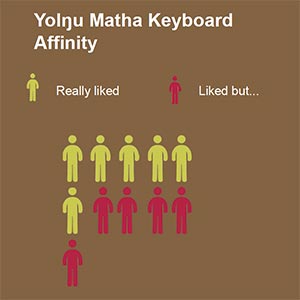

Phase 2 Development - Outcomes
The app is now on the Apple app store for both the MJD Foundation clients and the wider Arnhem Land community to use. This has been a first step to create an app that empowers the Northern Territory communities to write and communicate in their community languages using digital tools. There have been many research insights gathered that have not been incorporated into the app due to limited resources. But there are a multitude of opportunities for improvement for the future.
